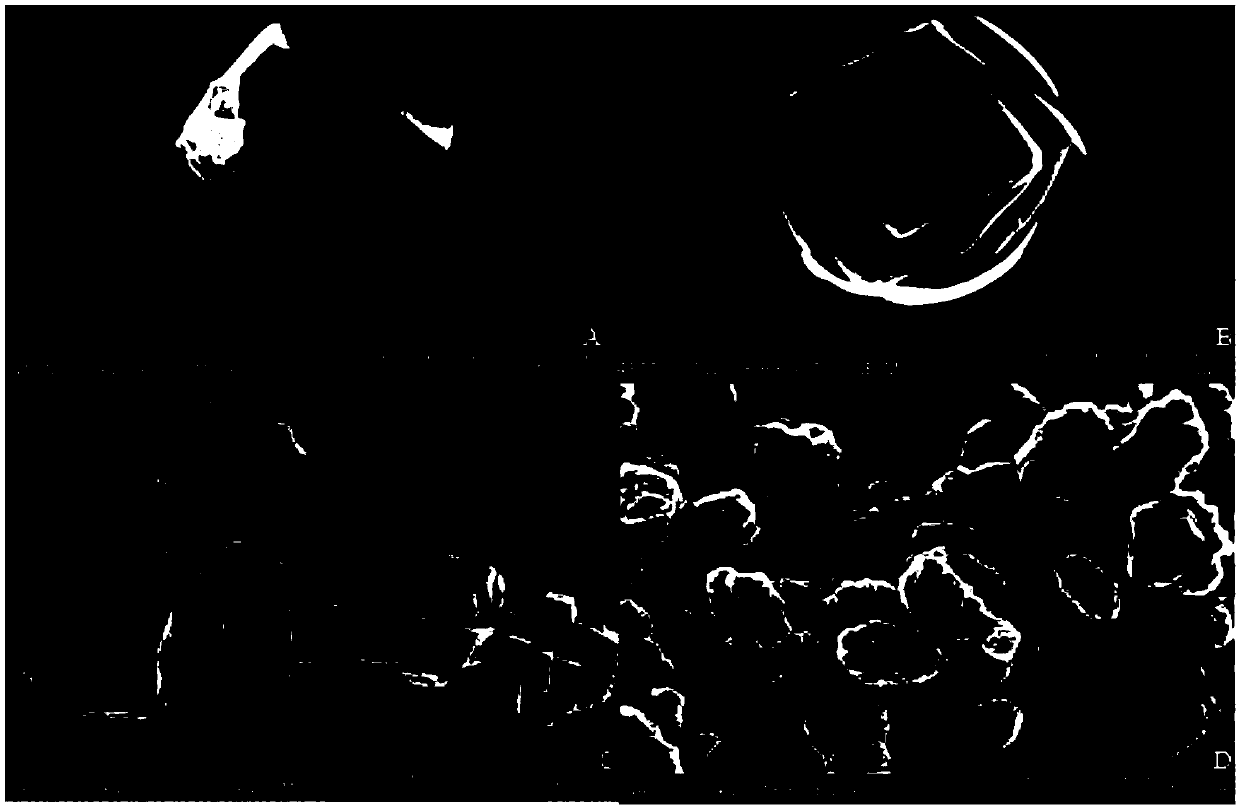Preparation method of small molecule functional polypeptide for promoting secretion formation of freshwater pearl
A technology of freshwater pearls and small molecules, applied in botany equipment and methods, methods based on microorganisms, biochemical equipment and methods, etc., to achieve the effect of small molecular weight of polypeptides
- Summary
- Abstract
- Description
- Claims
- Application Information
AI Technical Summary
Problems solved by technology
Method used
Image
Examples
Embodiment 1
[0020]Embodiment 1: first extract the total RNA (5 micrograms) in the mantle tissue of the freshwater Triangular mussel, obtain single-stranded cDNA by reverse transcription PCR, and design primers (forward primer sequence 1CGGGATCCCG ATTCCAGCAGGTGTCATCACC; reverse primer sequence 2CCGCTCGAGCGGATCGCCATAGCAACCCTTTTTG) to carry out PCR Amplify the coding DNA fragment corresponding to the last 16 amino acid residues of the C-terminus of Pif protein (the complete sequence of the gene has been submitted to the GenBank nucleic acid database, accession number is MF496231) (referred to as HcPif-C16). Then use ligase to connect the HcPif-C16 gene PCR product purified by digestion gel with the plasmid vector pet28a that has been double digested (BamhI and Xhol) in advance to complete the construction of the recombinant plasmid. The constructed recombinant plasmid was transformed into the host Escherichia coli strain BL21 Rosseta Gammi DE3 for expression using the general calcium chloride...
Embodiment 2
[0022] The synthesis test is basically the same as in Example 1, except that the selected polypeptide fragment sequences are different. First, extract the total RNA (5 micrograms) in the mantle tissue of the freshwater Triangle sail mussel, obtain single-stranded cDNA by reverse transcription PCR, and design primers (forward primers) Sequence 11CGGGATCCCGTGGAGAACAGTTGTAGTTAGTCTCAGG; reverse primer sequence 12CCGCTCGAGCGGCTTCAATTTGAGTTTGTCTTTCC) for PCR amplification of 16 of the middle non-functional domain interval of the 420th to 435th position of the Pif protein (the complete sequence of the gene has been submitted to the GenBank nucleic acid database, the accession number is MF496231) The coding DNA fragment corresponding to the amino acid residue (referred to as HcPif-B16). Subsequent protein expression, purification and detection were the same as in Example 1.
Embodiment 3
[0024] The synthesis test is basically the same as in Example 1, except that the entire Pif80 protein gene sequence is selected for use, that is, at first extract the total RNA (5 micrograms) in the mantle tissue of the freshwater Triangle sail mussel, obtain single-stranded cDNA by reverse transcription PCR, and design primers (forward primer sequence 13CGGGATCCCGACCAGGCAACTCTCTGGTTGC; reverse primer sequence 14CCGCTCGAGCGGATCGCCATAGCAACCCTTTTTG) to PCR amplify the coding DNA corresponding to all 483 amino acid residues of Pif protein (the complete sequence of the gene has been submitted to the GenBank nucleic acid database by myself, accession number is MF496231) Fragment (referred to as HcPif80). Subsequent protein expression, purification and detection were the same as in Example 1.
PUM
| Property | Measurement | Unit |
|---|---|---|
| molecular weight | aaaaa | aaaaa |
Abstract
Description
Claims
Application Information
 Login to View More
Login to View More - R&D
- Intellectual Property
- Life Sciences
- Materials
- Tech Scout
- Unparalleled Data Quality
- Higher Quality Content
- 60% Fewer Hallucinations
Browse by: Latest US Patents, China's latest patents, Technical Efficacy Thesaurus, Application Domain, Technology Topic, Popular Technical Reports.
© 2025 PatSnap. All rights reserved.Legal|Privacy policy|Modern Slavery Act Transparency Statement|Sitemap|About US| Contact US: help@patsnap.com


